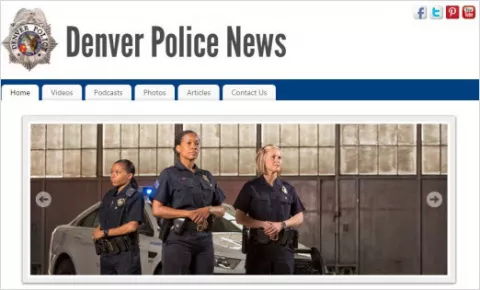
The Ash Center for Democratic Governance and Innovation at the John F. Kennedy School of Government at Harvard University is out with its latest list spotlighting government innovators. In all, the 2015 Bright Ideas program recognizes 124 innovative U.S. government programs.
We've highlighted 10 of the cities and their bright ideas (as described by the Ash Center) below. Be sure to click here to see what all 124 government programs did to merit recognition.
- Aurora (Illinois) Broadcast Real-time Inspection Transparency Emails: With this program, the city of Aurora can send emails to the entire private-sector team of any contractor automatically for any inspection activity. These emails allow the city to convey a message to all parties with web links to online tools and point-of-service surveys. They also provide contractors with access to information on how to make the inspection process as smooth as possible, including a list of “top ten” failed items that enables them to proactively address these issues, saving money and time for both the contractors and the city.
- Avondale (Arizona) Shop, Give, Serve Local: Through the "Shop, Give, Serve Local" marketing campaign, residents were encouraged to reinforce local connections with their West Valley communities through shopping local businesses and giving or serving with a local charitable organization, school, church, or team of their choosing. Several West Valley cities declared the month of March “Shop, Give, Serve Local” month through proclamations, and the concept was promoted through news releases, social media, a project website, community events, and a digital billboard along Interstate 10. The initiative gives exposure to locally owned businesses and nonprofit organizations; gives citizens centralized destinations to buy, give, or serve; increases local revenue; and shapes the West Valley as a place to bring business to a supportive local community.
- Birmingham Metro Pop-Up Project: The Regional Planning Commission of Greater Birmingham enlivens neighborhood streets by addressing local vacancies and roadway configurations. The aim of the Pop-Up Project is to promote active modes of transportation and spur economic development in a way that is easily replicable through temporary corridor improvements that reintroduce pedestrians and cyclists to the environment.
- Brea (California) Energy Efficiency and Solar Project: The city of Brea partnered with Chevron Energy Solutions to complete a design/build energy project that significantly improved energy efficiency and generates over 1.8 megawatts of solar power. The lighting technology conversion project retrofitted and replaced heating and cooling equipment in buildings and installed photovoltaic solar generation systems at three city facilities; the city expects to reduce energy consumption by 40% and save $13 million over 25 years.
- DenverPoliceNews.com: Tired of seeing only the most negative stories about policing in their community picked up by traditional media, the Denver Police Department now tells its own story by housing a multimedia news agency within its own walls. With funding from a nonprofit organization, the department has built a media studio, hired a social media coordinator and staff, created a press strategy, and is now sending out real-time corrections to inaccurate stories in traditional media as well as creating video packages at or better than the quality of local market outlets. It also plans to launch a website and mobile app. The frequency of positive media coverage has increased from 5-6 stories per year to 3-5 per week.
- Hamilton (Ohio) Employee Innovation Challenge: After a study showed that disengaged employees cost the U.S. approximately $500 billion in lost productivity per year, a team of individuals (The Innovation Team) developed the Hamilton Employee Innovation Challenge, a contest encouraging employees to submit ideas and work in cross-departmental teams to improve processes, address challenges and take advantage of opportunities.
- Nashville (along with Boston, Palo Alto and Raleigh) Multi-City Innovation Campaign: This is a partnership between the four cities. Their vision is to create a process and environment where developers can build scalable and sustainable civic apps that address shared challenges across communities through a unique low-dollar procurement approach.
- New York City Risk-Based Inspection System: This initiative gives New York City’s Fire Department the capability to prioritize building inspections based on risk in order to reduce and prevent fires and fire-related hazards in the city. In a dense urban environment like New York City, dangerous building conditions put communities and neighborhoods at risk. The system has played an important role in identifying at-risk buildings, which has helped to reduce the number of injuries and deaths to the public and first responders caused by fire.
- Riverside Resident Connect: The California city designed and launched an integrated set of easy-to-use native mobile applications for citizens and employees to use that have helped transform Riverside into a cost-efficient "intelligent city." Once-siloed government, business, education and community organizations are now collaborating daily and implementing a continuous stream of mobile and web solutions.
- Santa Fe MIX: Facing a challenge of retaining the talent and constituency of young professionals in their 20s and 30s who were finding it difficult to find careers in and engage with the Santa Fe community, the city created a committee to organize monthly mixers where these individuals can be connected to local businesses. The program has now grown to include a yearly start-up competition that brings resources and connections to local young entrepreneurs and helps foster a vibrant and thriving economic community.
Read about all 124 bright ideas here >>
The Ash Center for Democratic Governance and Innovation advances excellence in governance and strengthens democratic institutions worldwide. Through its research, education, international programs, and government innovations awards, it fosters creative and effective government problem solving and serves as a catalyst for addressing many of the most pressing needs of the world’s citizens.
###
You might also be interested in…
3 new city rankings: See who's leading in sustainability, growth and transportation



